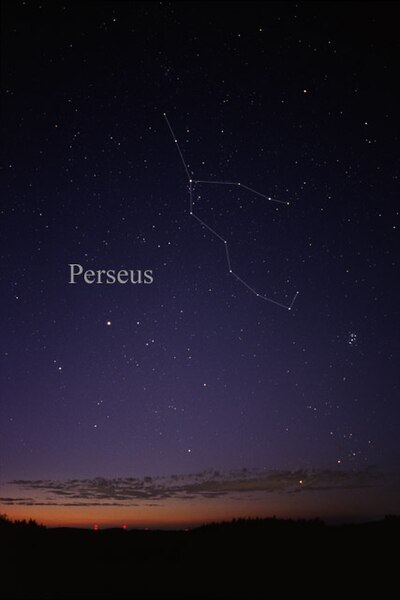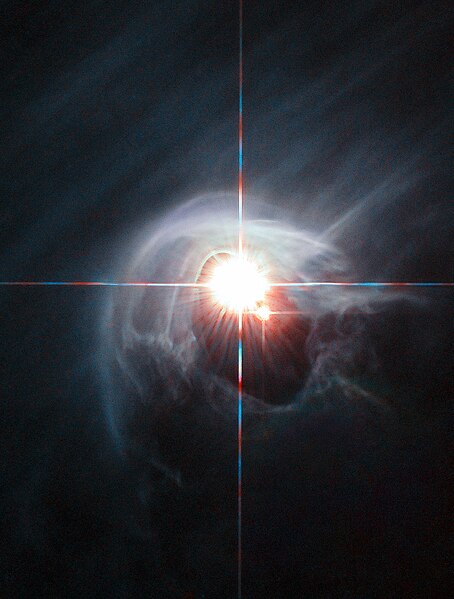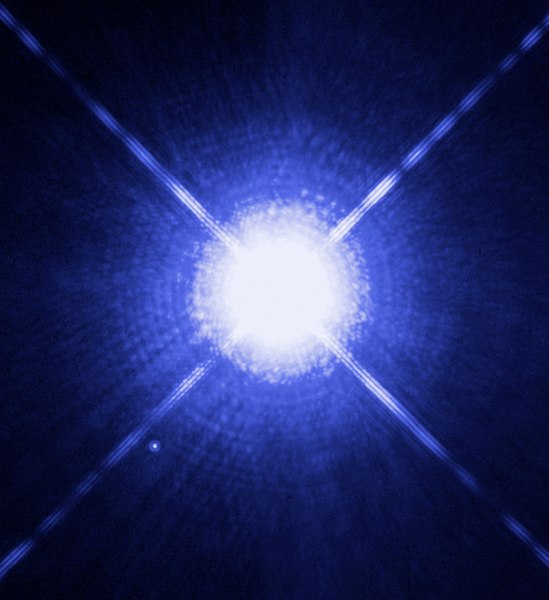Algol, designated Beta Persei, known colloquially as the Demon Star, is a bright multiple star in the constellation of Perseus and one of the first non-nova variable stars to be discovered.
Johannes Hevelius, Uranographia, 1690
The Algol system on 12 August 2009. This is a CHARA interferometer image with 1/2-milliarcsecond resolution in the near-infrared H-band. The elongated appearance of Algol Aa2 (labelled B) and the round appearance of Algol Aa1 (labelled A) are real, but the form of Algol Ab (labelled C) is an artifact.
Algol is a bright star in the constellation of Perseus (upper right).
A star system or stellar system is a small number of stars that orbit each other, bound by gravitational attraction. A large group of stars bound by gravitation is generally called a star cluster or galaxy, although, broadly speaking, they are also star systems. Star systems are not to be confused with planetary systems, which include planets and similar bodies.
The Algol three-star system imaged in the near-infrared by the CHARA interferometer with 0.5 mas resolution in 2009. The shape of Algol C is an artifact.[citation needed]
Artist's impression of the orbits of HD 188753, a triple star system.
Star system named DI Cha. While only two stars are apparent, it is actually a quadruple system containing two sets of binary stars.
Sirius A (center), with its white dwarf companion, Sirius B (lower left) taken by the Hubble Space Telescope.






